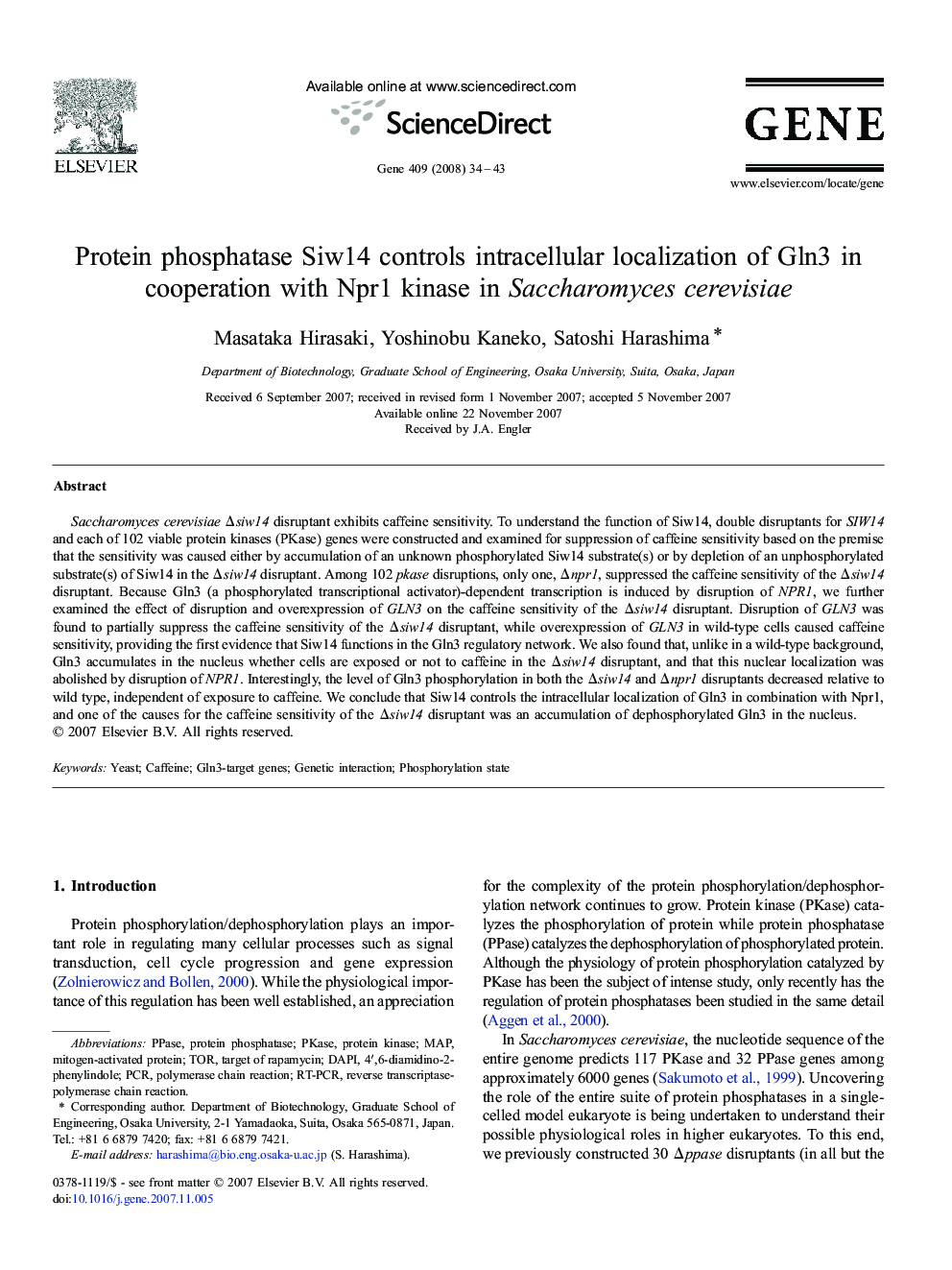| Article ID | Journal | Published Year | Pages | File Type |
|---|---|---|---|---|
| 2819462 | Gene | 2008 | 10 Pages |
Saccharomyces cerevisiae Δsiw14 disruptant exhibits caffeine sensitivity. To understand the function of Siw14, double disruptants for SIW14 and each of 102 viable protein kinases (PKase) genes were constructed and examined for suppression of caffeine sensitivity based on the premise that the sensitivity was caused either by accumulation of an unknown phosphorylated Siw14 substrate(s) or by depletion of an unphosphorylated substrate(s) of Siw14 in the Δsiw14 disruptant. Among 102 pkase disruptions, only one, Δnpr1, suppressed the caffeine sensitivity of the Δsiw14 disruptant. Because Gln3 (a phosphorylated transcriptional activator)-dependent transcription is induced by disruption of NPR1, we further examined the effect of disruption and overexpression of GLN3 on the caffeine sensitivity of the Δsiw14 disruptant. Disruption of GLN3 was found to partially suppress the caffeine sensitivity of the Δsiw14 disruptant, while overexpression of GLN3 in wild-type cells caused caffeine sensitivity, providing the first evidence that Siw14 functions in the Gln3 regulatory network. We also found that, unlike in a wild-type background, Gln3 accumulates in the nucleus whether cells are exposed or not to caffeine in the Δsiw14 disruptant, and that this nuclear localization was abolished by disruption of NPR1. Interestingly, the level of Gln3 phosphorylation in both the Δsiw14 and Δnpr1 disruptants decreased relative to wild type, independent of exposure to caffeine. We conclude that Siw14 controls the intracellular localization of Gln3 in combination with Npr1, and one of the causes for the caffeine sensitivity of the Δsiw14 disruptant was an accumulation of dephosphorylated Gln3 in the nucleus.
